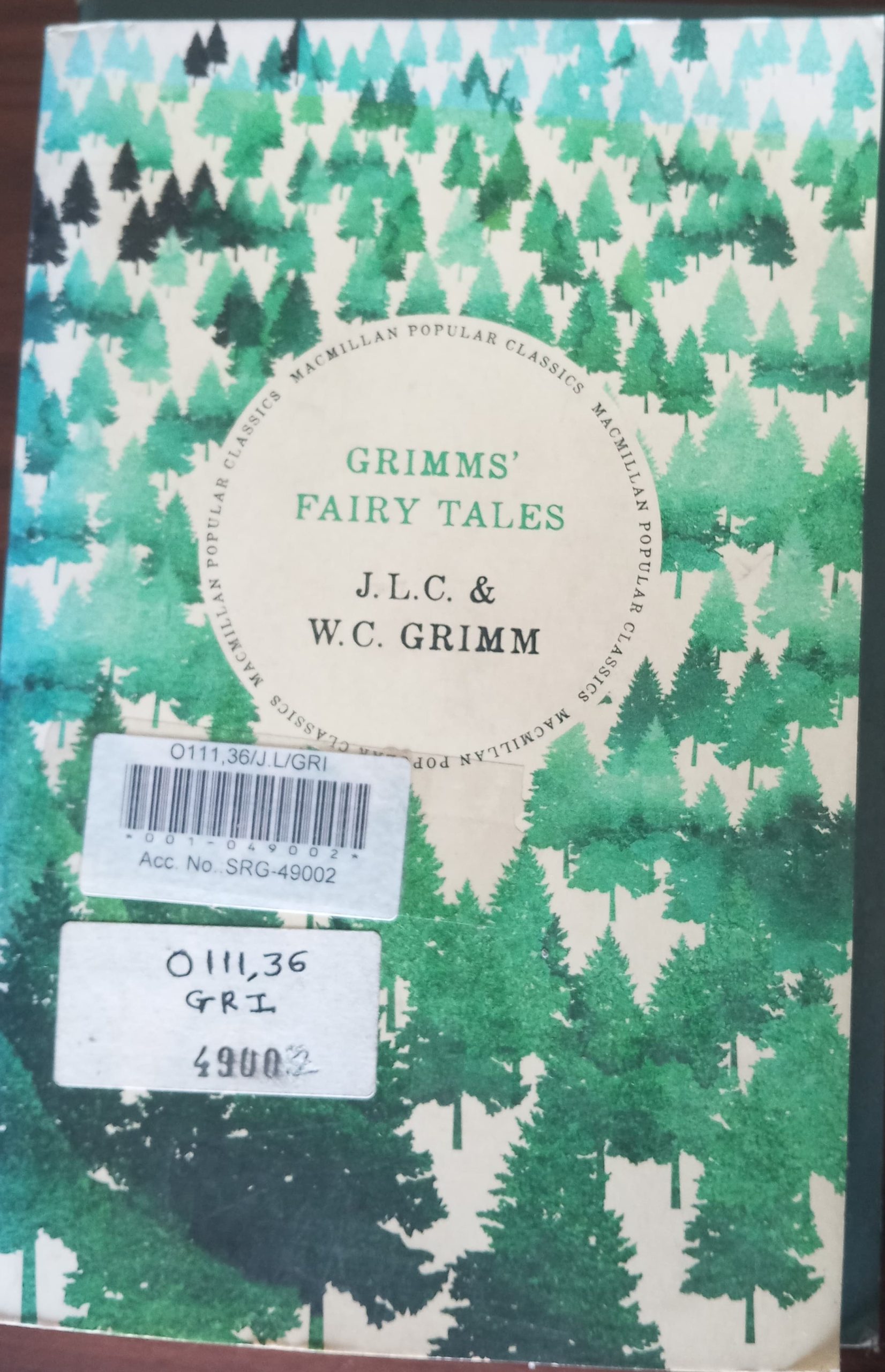Book Review :Bachhav Om Nanasaheb, MGV's Loknete Vyankatrao Hiray Arts, Science and Commerce College, Panchavati Nashik The Fairy Tales of the Brothers Grimm is a classic collection of stories compiled by Jacob and Wilhelm Grimm in the early 19th century.
Read More
Book Review :Bachhav Om Nanasaheb, MGV’s Loknete Vyankatrao Hiray Arts, Science and Commerce College, Panchavati Nashik
The Fairy Tales of the Brothers Grimm is a classic collection of stories compiled by Jacob and Wilhelm Grimm in the early 19th century. These tales, rooted in German oral storytelling traditions, feature some of the most famous stories ever told—Hansel and Gretel, Snow White, Rapunzel, and Cinderella, among others.
At first glance, they may seem like simple bedtime stories, but their original versions are far more intense and gritty than the versions most of us grew up with. These tales explore themes of survival, danger, justice, and occasionally redemption. The Grimms didn’t invent these stories; they collected them from storytellers in an effort to preserve cultural heritage during a time of rapid change in Europe.
Analysis
What makes these stories so memorable is their ability to tap into universal emotions and struggles. They’re often about ordinary people facing extraordinary challenges—overcoming poverty, outsmarting villains, or surviving harsh conditions. For example, Hansel and Gretel isn’t just a story about escaping a witch; it’s a tale of resourcefulness and hope in the face of despair.
The simplicity of the writing makes these tales accessible but doesn’t take away from their impact. This plain style reflects their origins in oral storytelling, where stories were shared by word of mouth rather than written for elegance. However, the Grimms themselves edited and refined these tales over time, adding moral lessons and softening some of the more brutal elements to appeal to broader audiences.
One of the most interesting aspects of these stories is their timelessness. Despite being written down over two centuries ago, their themes of resilience, courage, and the struggle between good and evil remain relatable. These tales have been adapted countless times, from Disney movies to modern retellings, but the essence of the stories—their heart—continues to resonate.
It’s also worth noting how dark some of these tales are, especially compared to the sanitized versions many of us know. This darkness gives the stories a raw edge, showing that they weren’t just meant to entertain children but to convey deeper lessons about life, danger, and morality. They remind readers that life isn’t always easy, but cleverness, kindness, and perseverance can lead to a better ending.
About the Author
Jacob and Wilhelm Grimm, known as the Brothers Grimm, were German scholars and storytellers. While they are most famous for their fairy tale collections, they were also linguists and historians who contributed significantly to the study of folklore and the German language.
About the Book
This book is more than just a collection of fairy tales—it’s a cultural artifact. It captures the beliefs, fears, and hopes of a society that existed long before ours. Each story carries a unique flavor, from the magical and uplifting to the eerie and cautionary. While modern adaptations often smooth out the rough edges, the original tales retain a rawness and authenticity that make them feel alive.
Reading these stories also feels like connecting with something ancient. You’re not just reading for entertainment; you’re engaging with traditions that have been passed down for generations. This blend of cultural significance and timeless storytelling is what makes the Grimms’ collection so special.
Final Thoughts
The Fairy Tales of the Brothers Grimm isn’t just a book—it’s an experience. It’s a reminder of the power of storytelling and how it can transcend time and place. The stories are simple yet profound, offering lessons that feel just as relevant today as they did centuries ago.
What stands out most is how these tales balance hope with reality. Life in these stories is rarely easy, and happy endings aren’t guaranteed. But there’s always a sense of justice—that good, even if it struggles, will ultimately triumph over evil.
If you’re someone who enjoys exploring the roots of popular culture, this book is a must-read. It’s fascinating to see where so many of the stories we know and love originated. At the same time, it’s a chance to dive into a world that feels both familiar and wonderfully strange. Whether you’re revisiting these tales as an adult or discovering them for the first time, they offer a mix of nostalgia, curiosity, and timeless wisdom.
Show Less

